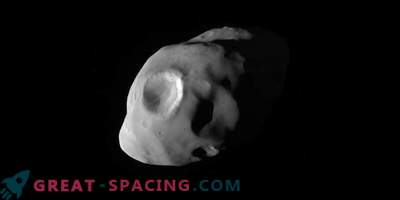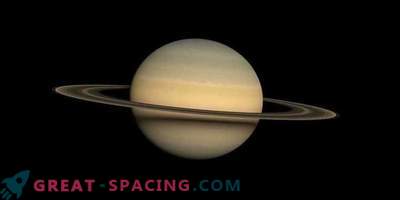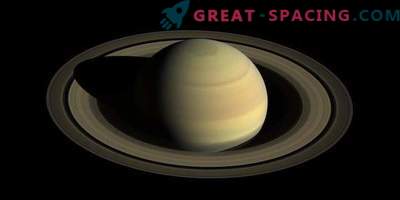
Artistic vision of Cassini flying under the rings of Saturn during the “grandiose finale”
In the last orbits in 2017, the Cassini spacecraft dove between the rings of Saturn and its upper atmosphere, taking a dip in a shower of dust, which astronomers call “ring rain”. The researchers report that they managed to capture microscopic materials from the rings of the planet (what kind of materials, how they are distributed, and how much dust falls on Saturn).
The conclusions were made on the basis of Cassini's cosmic dust analyzers and instruments by radio and plasma waves. These data are output a year after the spacecraft burned in the atmosphere of the planet. They come from the “grand finale” of the mission, where Cassini performed a series of risky maneuvers to race under Saturn's rings at a speed of 75,000 miles per hour. This is an example of engineering and navigation success, launched since 2010.
For the first time, researchers were able to analyze fragments of Saturn's rings. The mission was managed by the NASA Jet Propulsion Laboratory with ESA and the Italian Space Agency.

Over 22 orbits of the “grand finale” (blue), Cassini slipped through a 1200-mile-wide space between Saturn's rings and its atmosphere. The last series of space spans (yellow) plunged it into the most distant rings of the planet.
Amazing Physics
It was incredibly difficult to catch the ring rain predicted by physicists. If the ship came too close to the rings, it could be destroyed. Cassini made 22 passes around Saturn, slipping between the nearest ring and the planet’s upper atmosphere (1200 miles wide).
During the final orbits, the dust collector grabbed more than 2,700 charged dust particles. This is enough to send about a metric ton of material to the planetary atmosphere every second. But these particles did not fall directly into the planet only by gravity. The team believes that they rotate along the magnetic field lines of Saturn, before crashing into the atmosphere.
Dirty snowballs
Scientists were able to study the composition of planetary dust. Most of the particles represented by pieces of water ice - the main component of the rings of Saturn. But the spacecraft gathered a lot of tiny silicates - a class of molecules that make up most of the space rocks. This discovery is important because it will help determine the exact age of the planet.
If researchers identify the exact types of silicates that cover the rings of Saturn, then they can determine if these signs are billions of years old or much younger. The team of scientists is confident that the Cassini mission will provide much more useful information that will advance us in the study of the solar system.











































